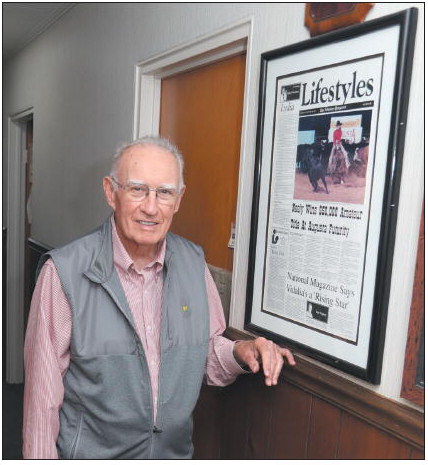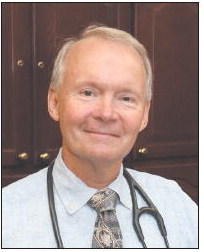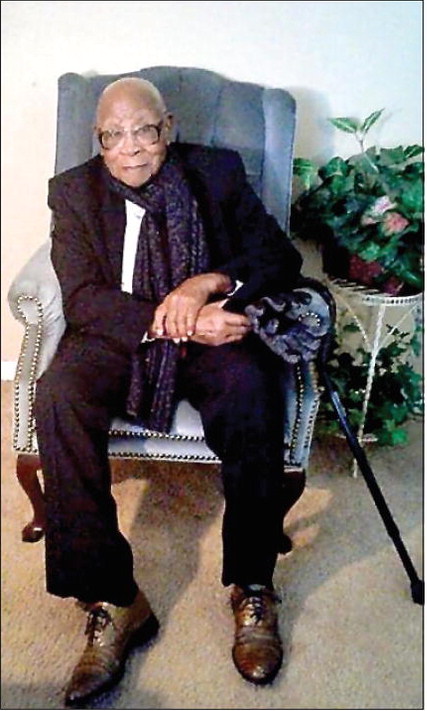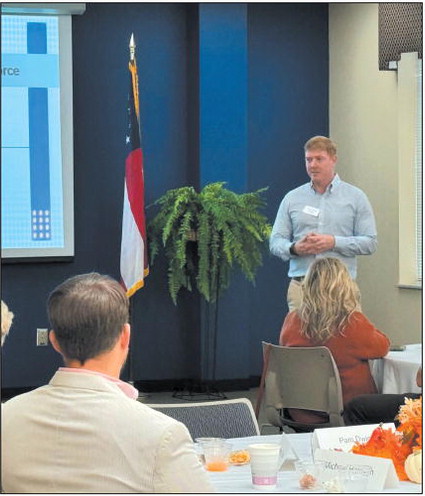DIAMOND JUBILEE


September 18 marks the official 60th anniversary of Memorial Health Meadows Hospital. When it first opened its doors and welcomed its first patient in 1963, John F. Kennedy was president and the building was just two stories high, housed 51 beds, and was known as the “Dr. John M. Meadows Memorial Hospital.” Though much has changed since then, our ever-evolving hospital has remained steadfast in its unwavering commitment to serve and support the health and well-being of the people of Vidalia and the surrounding communities. In an era when medical facilities and institutions fail to weather the storms of the changing times, Meadows has not only survived — it has thrived.
This month, as we celebrate countless lives saved, healed, nurtured, and brought into the world at Meadows, we are thankful. We pause and reflect on the journey, cherishing the memories of the past, and looking forward to a future filled with continued growth, compassion, and the invaluable services the hospital provides to us all.
This diamond jubilee would not be complete without hearing from some of the folks who witnessed its rich history or had a hand in taking the institution from good to great, so we asked 12 people to share insight and stories about significant contributions, how decisions were made, points of particular pride, and what lies beyond tomorrow for Meadows. What we learned is this: It took a village to get here. Many — so many — gave their blood, sweat and tears to make sure that the Vidalia community had, and continues to have, a stateof- the-art hospital to care for families, friends and neighbors. Many others are leading the Meadows team into the future — toward the next era of healthcare excellence.
We start our tribute with words from Charles Andrew, Meadow’s devoted attorney of 40 years, its unofficial historian, and as Howard Holman jokes, the guy “who knows where all the bodies are buried.”
“It’s Deeply Personal” Providing access to healthcare — especially emergency care — is at the core of a hospital’s mission. It ensures that residents can receive medical attention when needed.
“The hospital has saved my life three times — three times,” says Andrew. “In 1972, my appendix ruptured. I thought I was dying, and I crawled to the hospital. My dear friend, Dr. Bob DeJarnette, put me under the knife and saved me. After it was over, I was so happy to be alive, and I thanked him graciously, and he said, ‘It was nothing. There was a 30 percent chance you would’ve survived anyway.’” Andrew says the second time the hospital saved him was after a much-needed vacation to Egypt, and after traveling 35,000 feet above sea level on a 20-hour flight home, he suffered a blockage in his colon. Dr. John Spence and his aides saved him that time.
Then in 2010, the hospital acquired a new state-of-the-art (at the time) 64-slice computed tomography scanner (CT or CAT scanner) to allow doctors to see inside patients’ bodies. At the time, it was one of only two of its kind in Georgia.
“They needed a Guinea pig to help train the physicians, and so I volunteered,” he says. “Well, after a few minutes Dr. Joey Giles said, ‘Hell’s bells, you have all sorts of problems!’ The scan showed that four of my arteries were 90 percent blocked, and he arranged for me to have
quadruple bypass surgery. I had the surgery, and that was that.”
He paused before continuing.
“A very prominent board member had the same problem, but he delayed his heart surgery and died at the Savannah airport a few weeks later,” Andrew says. “So you see, that hospital is why I’m still here today. [Ensuring] its success is deeply personal for me — for all of us. You never know when you are going to need it. They may have to save me a fourth time!”
According to Andrew, even the 2021 sale to HCA was rooted in securing the hospital’s future. He notes that about six years ago, 68 percent of all rural hospitals were losing money — a result of rendering care to a majority of patients who are uninsured or on Medicare or Medicaid, programs that result in financial losses for hospitals. Meadows’ administrators and the members of the Board of Directors saw the writing on the wall and knew they had to be proactive about maintaining the financial health and stability of the hospital.
“The sale to HCA was a very positive move and ensured the hospital’s survival now and in the future,” he says. “That was the right decision.”
During many of the conversations about Meadows’ 60th anniversary, COVID came up — an extraordinarily trying time for both medical professionals and administrators. The sale to HCA had occurred the year before the pandemic.
“Everyone was giving it all they had, during a time when so many were sick and dying,” Andrew remembers. “Our people were scared and exhausted, but they showed up. We had sold to HCA, and our first CEO was, and is, Matt Hasbrouck. He wowed everyone with his hands-on approach. During the COVID crisis, he fulfilled his
10A continued from page
main responsibilities, plus, several employees personally observed him cleaning rooms and making beds during the crisis. He is one of the best of all, and let me tell you — we’ve had some great ones!”
Andrew refers to healthcare professionals as “heroes,” and cites their dedication and loyalty.
“The public doesn’t realize how hard they work, and how a kind letter to the editor or a thank you note or email blesses these unsung heroes,” he says. “We just don’t thank them enough.”
Location, Location, Location
In its 60 years, there have been lots of great decisions and milestones that helped Meadows provide quality healthcare services to the community. Local businessman and consultant Matthew Oxley sat on the Hospital Authority Board when the hospital found itself at an earlier fork in the road.
The “old” hospital in Meadows Estates had been added on to a few times and had become somewhat of a “hodgepodge of buildings and spaces,” some of which were out of code.
“So, do you spend $20 million to fix all the issues and still end up with an old facility?” Oxley remembers. “Or do you spend $55 million to build a new, state-of-the-art facility in a better location?”
The community soon began to rally behind the decision to build a new hospital, but where?
“We looked at three or four parcels of land, and then we saw the site between the two highways [GA-292 and US-280],” he says. “It was about location, location, location, and a site between two major highways eases transportation issues. Plus, from the very beginning, we knew that the new site would give the hospital better visibility, which is important. People need to see their hospital.”
An architectural firm led the design efforts, but Oxley notes that each hospital department provided input to avoid having anything “ridiculous shoved down their throats.”
“The design team listened, and they drew upon “lean manufacturing” principles, but when you are talking about hospitals, it’s called, “lean healthcare,” he explains. “They moved storage for supplies closer to the areas where those supplies would ultimately be used. They made some changes to improve patient throughput time in the Emergency Room. They implemented a color coding system to help reduce errors and increase efficiency and effectiveness.”
The new design and changes resulted in labor and cost savings and better patient experiences and outcomes. And there were no gaps in patient care between the closing of the old hospital and the opening of the new hospital.
“The transition was perfectly executed,” Oxley says. He adds that continuous improvement is a hallmark of Meadows, along with a well-trained workforce, equipment at or near the leading edge of technology, and a facility to accommodate the needs of the community and the medical professionals who work there.
“It was the right move to build the new hospital when we did and how we did it,” he says. “It has proved to be crucial for medical procedures and emergencies, and since 5060 percent of trade comes from outside our community, it has also become a strong economic engine for our community. For a city the size of Vidalia, we have a great facility.”
Putting the Plan Into
Action
Prior to 1977, Ronnie Stewart ran the community’s ambulance service.
“Back then, the funeral home ran the ambulance service,” says Stewart, who ran Ronnie L. Stewart Funeral Service for decades. “That was back when there were only seven or eight doctors here and no full time emergency care — doctors took turns being on call. Well, we sure have come a long way since then.”
“When I look back at the history of Meadows, I believe that so much of the success is due to the efforts of Alan Kent,” he adds. “He was here for 21 years, I think. Alan is a visionary, and we were lucky to have him for so long, because most CEOs of hospitals burn out after a few years.”
Stewart says that after a lot of discussions about whether to expand the old hospital or build a new one, Kent lobbied hard for the new facility.
“He was right,” Stewart says. “And he worked hard every step of the way — putting the plan into action. And it really got things rolling. Today, our labor and delivery area is phenomenal, and I can’t say enough good things about our interventional cardiology department. A hospital adds so much to a community, and things really started happening around here when we built the new hospital.”
“I spoke from my
heart”
Mike Calhoun, who was chairman of the hospital board for 15 years or more, echoes Stewart’s sentiments and refers to Kent as “our champion.”
“Alan Kent took a nebulous idea [of building a new hospital] and made it happen — turned it into concrete walls and the beautiful facility it is today,” Calhoun says.
There were a lot of behind-the-scenes hurdles to clear before the new hospital project got off the ground (feasibility studies, securing backing for the loan, etc.)
“A group of us [including Alan Kent and others] went to Washington D.C. to HUD [U.S. Department of Housing and Urban Development] to convince them to back our loan,” Calhoun says. “They had a lot of questions for us, and at one point, one of them asked me why I was so committed to the hospital.”
Calhoun says that he thought about the question before answering.
“I told them that my wife and I had our first child in 1983, and that many of our friends urged us to go elsewhere to have our baby, and we bought into all of that. We drove all the way to Savannah, and in retrospect, we were just one couple of many having a baby that day. We were lined up [like parts] on a conveyor. It was very impersonal.”
After the successful delivery of their first child, Calhoun and his wife, Vicki, expanded their family.
“We had two more daughters, and we opted to have them at Meadows, and we would never hesitate to recommend Meadows to other expecting parents. It was not only convenient, but we received excellent care. Vicki felt very cared for, and that’s what I told the HUD folks that day — that our community’s hospital matters to me and so many, and that we needed an updated facility so that we could continue to provide the best care for families throughout our community. No one should have to leave town to get competent, attentive care.”
Calhoun spoke from his heart that day and gave the speech of speeches. The HUD team took notice and backed the loan.
Another hurdle was acquiring the property.
“Gaston Wilkes eventually sold the property to the hospital,” he says. “Charles Andrew made that happen — Charles made a lot of things happen for us.”
In the years before Alan Kent, Barry Michael was CEO of Meadows, and Calhoun says that long before the new hospital was built, there were other transformative moments that helped shape the ultimate success of the hospital.
“Barry Michael determined that we needed more medical professionals to come here, so he convinced us to do two things to help make that happen,” Calhoun remembers. “First, we built the Lucy Pierson Medical Building, which could house doctors, and also, he hired
11A
continued from page
Howard Holman, which was simply a stroke of genius. Holman is one of the reasons we have the talent we have here today. He is a relentless recruiter of physicians and medical professionals.”
He shared that many people helped to make Meadows more than just a stopover — more than just a place of last resort.
“Good, capable people saw to it that our hospital was a ‘place of choice,’ Calhoun says. “I’m really proud of what our hospital has become.”
What’s in a name?
It’s hard to imagine Vidalia and Lyons without a “community hospital,” but things looked much different prior to 1960. Local physicians operated small clinics here and there and could only care for a handful of patients at a time.
In 1946, something called the Hill-Burton Act had been signed into law by President Truman. It provided construction grants and loans to communities like Vidalia that could demonstrate viability — based on their population and per capita income — in the building of healthcare facilities. By 1960, people in the Vidalia community had begun to talk about the need for a central, muli-bed community hospital capable of caring for families and how the Hill-Burton Act could provide federal funding for that dream to come to fruition.
Of course, the physicians who had invested their time and money into their private clinics opposed the idea of building a “Hill-Burton hospital.” The decision to build it was eventually placed on a county-wide ballot for the citizens to decide. The electorate voted 2,219 in favor of a community-owned hospital, with 993 votes against the proposal.
Algur H. Meadows, a former citizen who had become a wealthy oil tycoon in Texas, sent a letter to Jack Meadows that said, “I see from the Vidalia paper that you have been appointed to the Hospital Board of Toombs County. I also see there is some controversy as to the location [of the new community hospital].” Meadows proposed a deal — if the county would approve a $150,000 bond issue, Meadows himself would match the $150,000 and throw in 20 acres of land in Meadows Estates for the facility, only if the hospital was named for his father, Dr. John M. Meadows, who many believed to be the first physician to practice medicine in the area.
“And that’s how Meadows came to be,” says Rusty Moses. “It was built in 1963, when I was still in high school, and in 1967, I went to that hospital and got my tonsils taken out. My dad took me, and they asked him how he was going to pay for the surgery. ‘Do you have insurance?’ they asked him, and my dad said, ‘I have green insurance,’ and he handed them two $100 bills.”
By 1977, Moses had graduated from Georgia Tech, had gotten married, had moved home to Vidalia to join his father in the family business (Georgia Tire Company), and had been asked to serve on the hospital board.
“That’s about the same time that the county asked [the hospital] to run the ambulance service,” Moses says. “And the ambulance service brought in more patients to the hospital than before, and some of them didn’t have a means to pay their bills and the hospital had to assume that burden. This, of course, became a financial burden for the hospital.”
Then in 1978, Moses and others had begun to raise money to build a medical library.
“We had to get some of the funding from outside sources, and I decided to send a letter to Algur Meadows and ask him for a personal donation to the project,” Moses says. “It was a long shot, but guess what? He sent us $5,000, and that was a pretty nice sum of money back then. We invited him to the groundbreaking ceremony, but he passed away just before.”
The early eighties brought growth to the old Meadows hospital, and pretty soon, the hospital found itself at capacity.
“Demand exceeded supply, and our obstetrics department was growing at a rapid pace, so in 1982, we applied for a Certificate of Need [CON] from the state of Georgia to build a new obstetrics wing.”
Moses mentions grants, general obligation bonds, an injunction against the hospital, revenue bonds, and a mad rush to get construction underway by the last day of 1983.
“There were a lot of problems and a lot of road blocks, but there were also a lot of people working together to solve them,” he says. “But all of that eventually resulted in the addition of the new wing of the old hospital and 30 more beds [and other expanded support services] in 1984. We moved obstetrics over there. That first hospital served us well for many years and helped a lot of people. That’s what I remember.”
Facing Challenges Head On
Prior to 1996, Mike Holland sat on the hospital board for 15 years, and eight of those years, he sat at the helm as chairman. He says that there was always a balancing act between providing the best healthcare possible to the community while maintaining financial health.
“There were always challenges, and we faced them head on,” Holland says.
One of those challenges came in 1982, when Medicare rolled out a system called Diagnosis Related Groups (DRGs) to replace the previous costbased reimbursement system. DRG is used by Medicare to reimburse hospitals for inpatient stays based on the patient’s diagnosis and the care provided during the hospital stay. This means that hospitals are paid a fixed amount for each patient based on the DRG assigned to the patient.
“That changed everything, and ultimately resulted in a steep decline in admissions [and a reduction of insurer payments for Medicare and Medicaid patients],” he says. “It created a financial nightmare for us, and we were forced to temporarily close the third floor.”
Holland, with his outof- the-box thinking, proposed turning the third floor into a nursing home to recover some of the lost revenue. The solution saved the day with 100 percent occupancy.
A few years later, another challenge emerged.
“For a while, we contracted with a hospital management company for the administration of the hospital, but they didn’t perform as well as they should have,” he remembers. “Charles Andrew and I became concerned about some things, and we ended up getting out of that contract and hiring a new CFO [Wes Bergman], but we had to go to Hilton Head and threaten them with a lawsuit. That year, our books showed we had lost a million dollars. Three or four years later, we were healthy and had over $20 million in the bank.”
Two years before Holland rolled off the board, he helped with a corporate reorganization essentially setting up three different boards: a non-profit board, a for-profit board, and an operational board.
“I think that the corporate reorganization was necessary and set us up for future growth,” he says. “We were able to have people on the board from surrounding counties, and the board had the ability to select our own members. It made us a strong regional hospital, and many great things happened afterwards. We opened a heart Cath Lab, a cancer center, and we continue to draw gifted doctors and medical professionals to the Vidalia area.”
In 1996, the year Holland’s term came to an end, the hospital became accredited by Joint Commission on Accreditation of Healthcare Organizations (JCAHO), the nation’s oldest and largest standards- setting and accrediting body in the healthcare industry proving once again that Meadows was, and still is, a top-notch healthcare facility.
“The world of healthcare is dynamic — ever changing,” Holland says. “And you have to pay attention, change with it, and make the best decisions for the community and all those who depend on the hospital that you can. That’s what we tried to do. Great things have happened here, and more great things are coming.”
The Recruiter-in-
Chief
Howard Holman has been called a “recruitment machine” when it comes to persuading gifted medical professionals to come to Meadows.
“I can only speak on Meadows starting when I joined in 1999 to 2018,” he says. “In 1999, [Meadows] was a typical small-town hospital offering only basic services. Fifteen years later, it was a significant medical center offering many tertiary services including a cath lab and radiation oncology, and then a new hospital was built that eventually caught the attention of HCA.”
Holman says that there are ten reasons for Meadows’ success, and that reasons one through nine are adding talented doctors.
“Doctors drive everything,” he adds. “Our Board of Directors and CEO have invested heavily in finding the best doctors in the country who would come to a community that is 90 miles from a major city. We brought them here and showed them how great our community is — that they could have great quality of life here. And we made sure they were well compensated. That’s all.”
He refuses to take any credit and waves off anything extraordinary he may have done to bring great doctors to the Vidalia area. Instead, he talks about the thousands of individuals at many levels who have contributed to Meadows over the years. “You can’t [talk] about Meadows without mentioning the likes of longterm employees like Joette Gay, John Harrell, Melony Jacobs, Jerry Pruett, Sheri Fountain, Michelle Cox and others,” he says. “A hospital is made up of people who care, and we have employed a lot of good people along the way.”
He says that he’d like to believe that he had some influence when it came to opening a cancer care center in Vidalia.
“At some point, I asked myself, ‘What do we need? What would be best for the patients here?’” Holman says. “And the answer was that we needed to develop a cancer program. But there was a lot of opposition — especially from Dublin and Statesboro — and sometimes when I brought it up, they’d say, ‘No, no, no!’ It was going to require a lot of money, and time, and more specialized medical professionals. But we needed it, and we got it, and today, when I hear that a person has been treated for cancer and is doing well, I am happy to know that I had some small part in making that happen here.”
The Names on the
Wall
Samantha Walker, who has worked at Meadows for 18 years, remembers how hard Holman pushed for the cancer center.
“Howard [Holman] saw a gap here when it came to cancer treatment,
12A continued from page
and he saw people suffering and knew that we could do something about it,” says Walker, who is now the Director of Cancer Services. “Howard, Alan Kent, and others fought hard, and they weren’t going to give up.”
Walker and Dr. Nasser Janbay worked for Meadows before the cancer center was opened, providing oncology and chemotherapy services to patients in need.
“We had set up shop in an old three-chair dentist office, and that’s where we were giving patients chemo,” Walker says. “It wasn’t ideal, but it’s the best we could do at the time. Before that, patients were having to travel out of town for chemo, and a lot of patients were opting not to have treatment at all because they couldn’t afford to travel for the treatment.”
The “big dream” was a cancer center with skilled, compassionate caregivers, the latest and greatest technology and equipment, and all cancer services under one roof — oncology, chemotherapy and radiation services.
“It came with a huge financial price tag, and much of it was paid for by members of our community,” Walker says. “In the lobby, there’s a big piece of plexiglas that lists hundreds of names of people who donated to make the cancer center a reality. Those names on the wall tell a story of all the Meadows employees who contributed to the cause, because each of them knew how important it was to the community, and they cared enough to help. We all had skin in the game.”
She also mentions that the exam rooms and labs have metallic wall plaques that recognize businesses and families who made significant donations to equip certain rooms — constant reminders that the community came together to open the center.
“The cancer center is beautiful and busier than ever,” she says. “The lobby is always full, which is a testament to the need that existed here — still exists here — and also a reminder of the dedicated leaders who got us here. They fought hard, and their efforts paid off.”
“I’m so thankful that you’re here!”
Dr. Henry Cline, a radiation oncologist, had worked in the Atlanta area for 27 years when he got a call from a headhunter telling him that Meadows in Vidalia was looking for a radiation oncologist.
“I came here and have never regretted it,” Cline says. “My quality of life is much better here, and I live 10 minutes from work.”
A group out of Jacksonville had designed the cancer center, which was nearing completion when Cline moved to town.
“Samantha Sapp and I worked behind the scenes and changed some things to work better for our patients,” Cline remembers. “We got in brand new machines and helped with the setup. And when we opened the doors, we went from seeing one patient to 10 to 20 patients per day. There was a great need here.”
Prior to the opening of the cancer center, patients had to journey to Statesboro and Dublin to receive radiation therapy, but the opening of Meadows’ cancer center changed that.
“People have stopped me out in public to say, ‘I’m so thankful that you’re here,’ and that makes me happy,” he says. “Our patients and their families love our staff and our facility, but most of all they appreciate the fact that we are located here, in Vidalia.”
Cline and his team are forward thinking and keep pace with research, new equipment and advances in radiation technology.
“In 2024, we hope to offer SBRT, which stands for stereotactic body radiation therapy, a cancer treatment that delivers extremely precise, intense doses of radiation to cancer cells while minimizing damage to healthy tissue,” he says. “It often has cure rates comparable to surgery and can reduce the number of treatments required. For example, a patient may need 30 treatments today. With SBRT, he or she may only need five. HCA gets it — they are on the same page with us, and they see the need to keep up with advances in technology.”
The Cath Lab is Born
Cardiologists like Dr. Joey Giles, specialize in diagnosing and treating conditions related to the cardiovascular system. He and his wife moved to Vidalia in the summer of 1988.
“Things were a bit primitive back then,” he says. “There were a lot of heart attack patients because there weren’t as many medications [for cardiovascular conditions], and there wasn’t a lot of information out there. But that’s changed significantly.”
A report from the World Heart Federation (WHF) noted that though the overall number of cardiovascular deaths increased in the last three decades — largely due to an aging and growing population — the related death rate fell globally from 354.5 deaths per 100,000 people in 1990 to 239.9 deaths per 100,000 people in 2019, suggesting that investments and advances in cardiovascular healthcare can save lives. Giles developed some of the region’s most advanced cardiology services, beginning with a focus on prevention.
“When I came here, I wanted a Cath Lab, but we didn’t have one,” Giles says. “It was a long road. We had to get a Certificate of Need to get the ball rolling. And in 2000, we finally got the Cath Lab, and it has made a tremendous difference here for patients and their
13A continued from page
families.” A Cardiac Catheterization is the most advanced procedure for evaluating heart health. A catheter is passed through a large blood vessel to your heart so your physician can see the flow of blood and pinpoint blockages or potential problems. Giles says that the Cath Lab at Meadows has the ability to insert and inflate balloons (angioplasty) and implant permanent stents — medical procedures that often save and extend lives.
“Before we got the Cath Lab, we had to send our patients to Savannah or Macon,” he says. “When you or someone you love is having a heart attack, the last thing you want to hear is that the hospital in your community can’t help you. Everyone knows that the faster a patient receives life-saving care, the greater the chance of survival. That’s why getting the Cath Lab was so important, and almost every day, I hear that the quality of care and the personal attention are very good here. That’s how I know we are making a difference.”
Tools in the Toolbox When Dr. Geoff Conner first arrived in town in 1992, Magnetic Resonance Imaging (MRI) scanners were relatively new, but Meadows already had one — a mobile unit. Though common today, MRIs revolutionized medicine, allowing doctors to see detailed images from inside a patient’s body to better evaluate and diagnose problems.
Today, Meadows continues to add equipment, technologies and capabilities that enhance healthcare, and through its 60 years, there are numerous examples.
“The advances in cardiology here have been significant,” Conner says. “Opening the heart Cath Lab was a big step forward. To do our jobs well and serve patients well, doctors need access to several different tools in the toolbox to detect medical problems as early and accurately as possible, and Meadows does a great job providing those tools for us.”
Conner also mentions the opening of the cancer care center, the hiring of Intensive Care Specialists and the addition of robotic- assisted surgery.
“Robot-assisted surgery is a minimally invasive surgical technique that usually leads to shorter recovery times and less pain,” he says. “There’s a lower risk of infection involved, as well. It is just another milestone in the hospital’s history — a great addition that will benefit so many.”
Conner emphasizes the importance of Meadows as a community healthcare provider, but also as a central player in the local economy.
“It has touched so many lives,” he says. “Our hospital is a critical piece of the overall infrastructure here, and we should all be proud and thankful that it has survived when so many small community hospitals have not.”
“We’ve always helped each other here”
Meadows was relatively new when Dr. Ben Neely moved to Vidalia in 1967. He came with a lot of hands-on experience having served in Vietnam and running the Emergency Room at Fort Gordon for a while. He says that locals didn’t know what to think about him at first.
“Maybe I was a bit of a renegade,” Neely jokes. “I think a lot of people didn’t like the way I looked, with my plaid pants and my long sideburns. But after a while, I changed, and everyone came around.”
He shares that in those early days, someone pulled him aside and said, “If you take care of the bootleggers and loggers, they will take care of you.”
“Back then, I worked and worked and worked,” he says. “I think there were seven doctors here, and as far as emergencies were concerned, I was on call every seventh day and every seventh weekend. We had to address anything that came in the door — anything. We all had to do a little surgery, and we trained each other. If we needed help, there was help. We’ve always helped each other here.”
Neely stitched wounds. He delivered babies. He opened a chest and resuscitated a heart. And most of the time, he and the other doctors didn’t have nurses to help, and so they often cared for their patients after procedures and surgeries.
“When you are a doctor, you never quit — you just keep going,” he says. “And you never stop learning. It was true then, and it’s true now.”
He says that the growth and success of the hospital should never be overlooked or undervalued. Hospitals, in their very essence, are the lifeblood of communities, and Meadows has helped save a lot of lives.
Sixty years of providing critical medical care, support, and comfort to generations of local families has not only shaped the hospital itself, but its longevity and evolution have also woven the hospital into the very fabric of local community life. If we are lucky, Meadows will be here for at least 60 more.
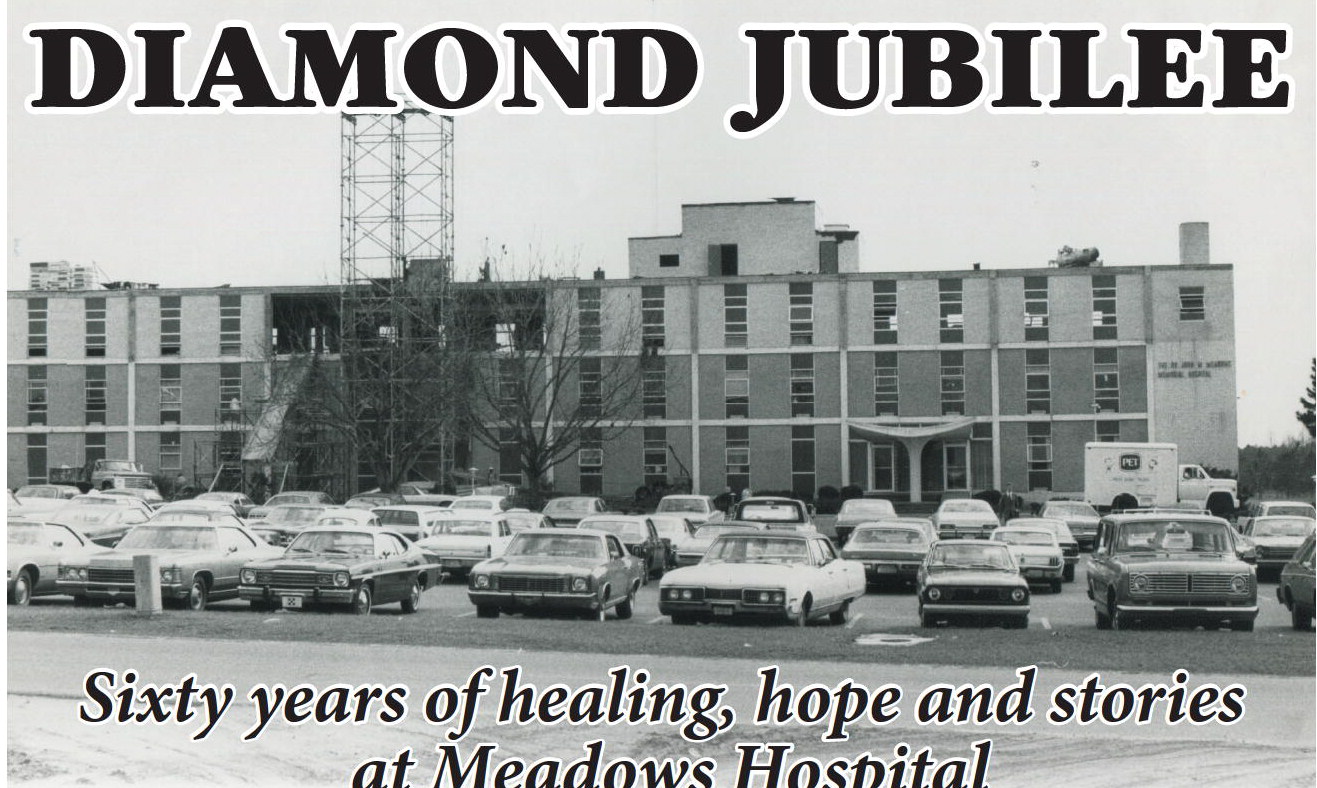
Mike Calhoun
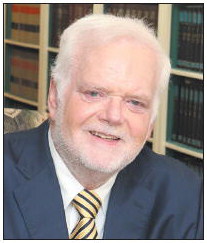
Matt Oxley
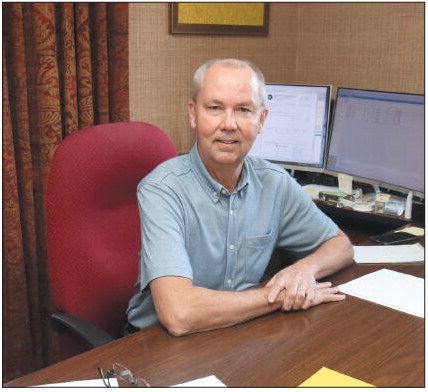
Ronnie Stewart
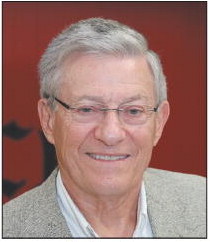
Samantha Walker
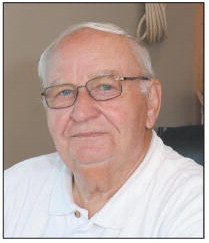
Rusty Moses
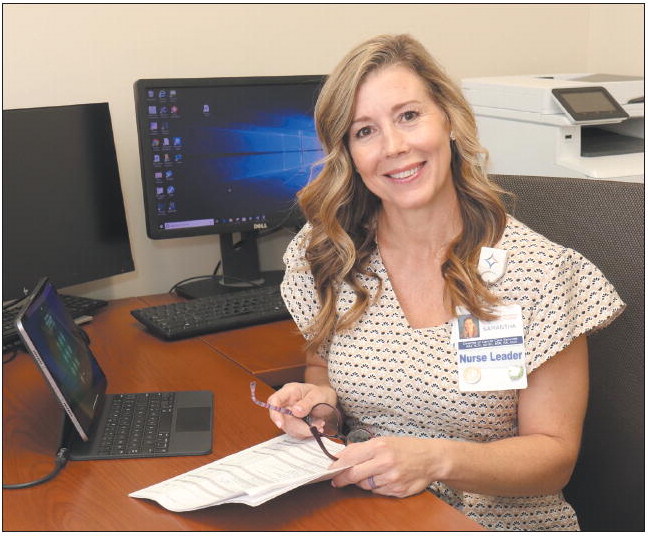
Mike Holland
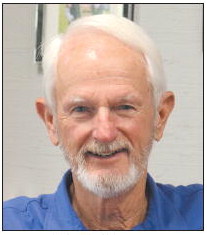
Howard Holman
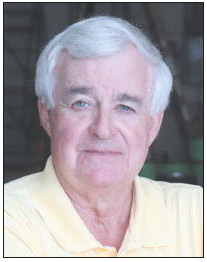
Dr. Henry Cline
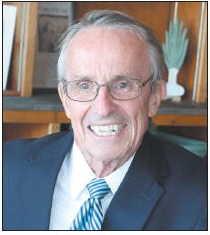
Dr. Joey Giles
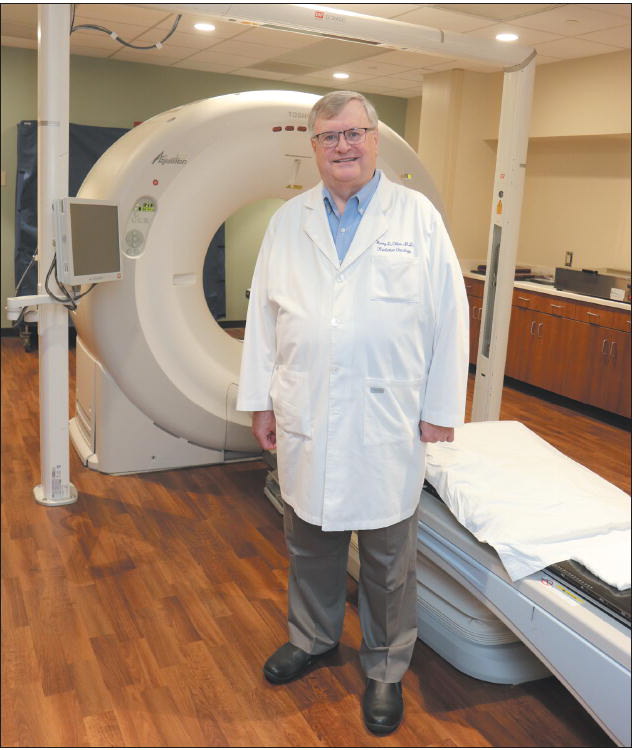
Dr. Ben Neely
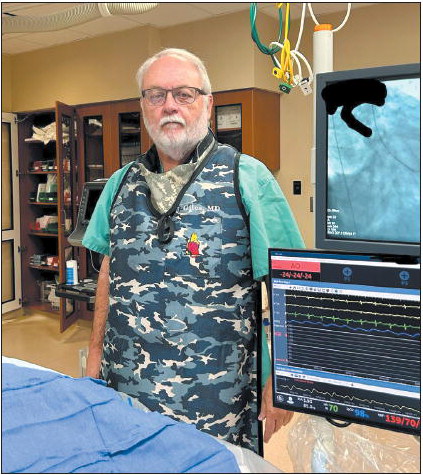
Dr. Geoff Conner
